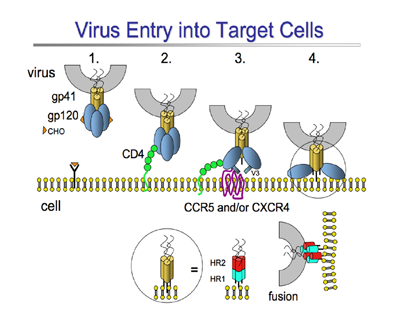The Mosier Laboratory
Research
Human immunodeficiency virus type 1 (HIV-1) is responsible for the AIDS pandemic. HIV-1 has entered the human population in the last century, and both the virus and the host are evolving, rapidly in the case of the virus, and slowly in the case of the human host. HIV-1 is a diverse swarm of related viruses both in individuals and in the global infected population. The most diverse region of the virus is the envelope gene that encodes the virus spike. The spike mediates virus binding to human cells and subsequent entry, and is also the target for host immune responses. Primary infection with HIV-1 almost always involves viral spikes (trimers of the envelope proteins) that bind host cell surface molecules CD4 and CCR5, but the virus can evolve to use other molecules for infection during the course of chronic infection. We are studying this virus evolution and its impact on sensitivity of the virus to entry inhibitors and the use of alternative coreceptors. In addition, we are developing CCR5 inhibitors as potential microbicides to prevent sexual transmission of HIV-1.


